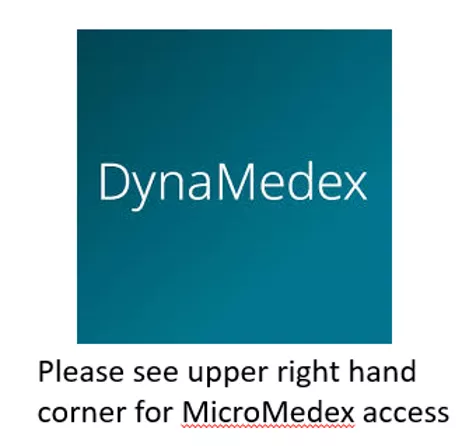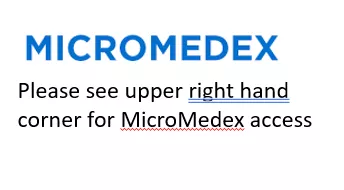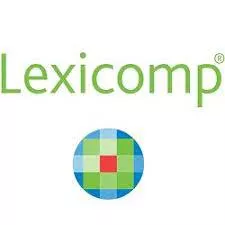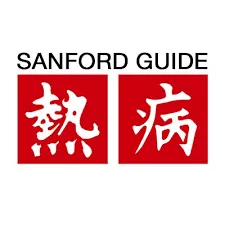Refine Your Search
Using the limiters which are located to the right of the search results will help to narrow down the search results and make your search more specific. Below is a list of limiters and their description.
LIMIT TO:
FULL TEXT: limits results to eBooks and magazine and journal articles for which full text is available online.
PEER REVIEWED: limits results to articles that have been reviewed by the author's peers for quality and accuracy.
CATALOG ONLY: limits results to those found in the library catalog, which include print books and eBooks, magazines and journals, DVD’s and streaming videos and music CD’s, but not individual articles.
PUBLICATION DATE Use the sliding arrows or type-specific years into the boxes on the left and right to narrow results to those published within a specific date range. This can be useful when you want to filter out all but the most recently published items, or when you are looking for information published immediately after an event that you are researching.
SEARCH FOR Limiters within this facet include specific media types such as books, journals, primary sources, and videos. If you are required to use “scholarly” sources, academic journals are the best choice.
SUBJECT If you choose a limiter from within this facet your results will be limited to those where the subject appears within the subject field of the item’s record, meaning that the item deals specifically with that subject. Otherwise, your search results will include those in which your search terms are also found in the title, abstract (short description of the content), or even the full text of an item.
PUBLISHER If you believe that material published by a specific company or organization is more trustworthy or otherwise better suits your research need, you can limit your results to those information sources.
PUBLICATION Likewise you can limit your results to those that appear within a specific publication. Examples might include specific scholarly journals like Science or Foreign Affairs or news sources like the Christian Science Monitor.
LANGUAGE It is highly recommended that you use the Language facet to limit your search results to those in your native language.
GEOGRAPHY If you are only interested in information about a certain phenomenon occurring in a specific place, such as voting fraud in the United States, it can be useful to filter out results that contain information specific to another geographic location.
LOCATION This facet may be especially useful if you have limited your initial search to the Catalog Only, and you want to see only those items available from SVCC.
DATABASES - Select all indexes or choose one to search within that index only.
Note: Any limiters or expanders that you have applied can be eliminated by clicking on the X in the red box to the right of the limiter or expander.
Published by CINAHL, the EB Care Sheets provide a summary of what is known about a disease or condition as well as the best treatment options. Each sheet incorporates the lastest evidence, statistics, research and references on a given topic.
Published by CINAHL, the quick lessons provide general background information on approximately 180 topics - including description/etiology, statistics, risk factors, symptoms and clinical presentation, ICD-9 codes, and assessment. CEs are available.
Clinical overview for hundreds of conditions available by specialists - updated monthly. Includes, pitfalls, terminology, diagnosis, risk factors, diagnostic procedures, treatment goals, prognosis and prevention.
Essential Databases to Locate Clinical Practice Guidelines
Synthesized evidence-based articles can be found in the following databases available at the Medical Library:
- CINAHL - Filter for Publication Type>"Practice Guidelines"
- The CUSP Method (AHRQ)
- Cochrane Library - Enter search terms - click enter
- Johanna Briggs Institute (JBI) – Browse by subject or enter a search term
- PubMed (Medline) -Filter for Article Type>"Guidelines" or "Practice Guidelines"
You also have the option to search the above databases all at once by using the SMHCS Medical Library's digital library (see below for examples of easy literature search strategies to help locate guidelines)
6. SMHCS Digital Library - Search the SMHCS Medical Library’s digital library for "Practice Guidelines". Consider limiting by Publication Date to view recent guidelines. Use multiple synonyms for your search topic. Use pull-downs TI and AB or TX
Search these resources separately
7. UpToDate – enter a search term – click left under “Society Guidelines”
8. Clinical Key
8. Clinical Nursing Skills Procedures (e-book)
Perry and Potters'
Popular Terms to Use for searching the literature for guidelines
Enter a term below and use a pull down as a designation of what the word will be recognized as within the database: TI = Title; TX= Text word; AB= Abstract; SO=Source
- Guidelines - TI or TX or AB - add JBI or Cochrane and set as SO (Source)
- Practice Guidelines - TI or TX or AB plus terms like Nursing and CLABSI
- Clinical Practice Guidelines - TI or TX or AB add terms like "Parental Nutrition" and a societal name like "ASPEN" or "ESPEN" TI or SO (source)
- Clinical Consensus Statement - TI or TX or AB add terms like "nursing care" TX or AB
- Recommendations - TI or TX or AB
- Standard Procedure
- Protocol
- Best Practice
- Evidence-Based Practice
- Think of synonyms for your term and combine them with the terms above.
More Tips and tricks to locate your favorite Guideline
- Drop the title of a current article into PubMed and click "cited by" or "similar articles" - This strategy will pull updated guidelines or similar guidelines
- Drop the title of the article that is considered Gold Standard for a policy into the top search bar of the digital database - hit enter - once the results appear - click create an alert - set perimeters for once a month notice and you will receive an email notifying you of new article availability on this citation.
Literature Search Example 1 - Title and Source
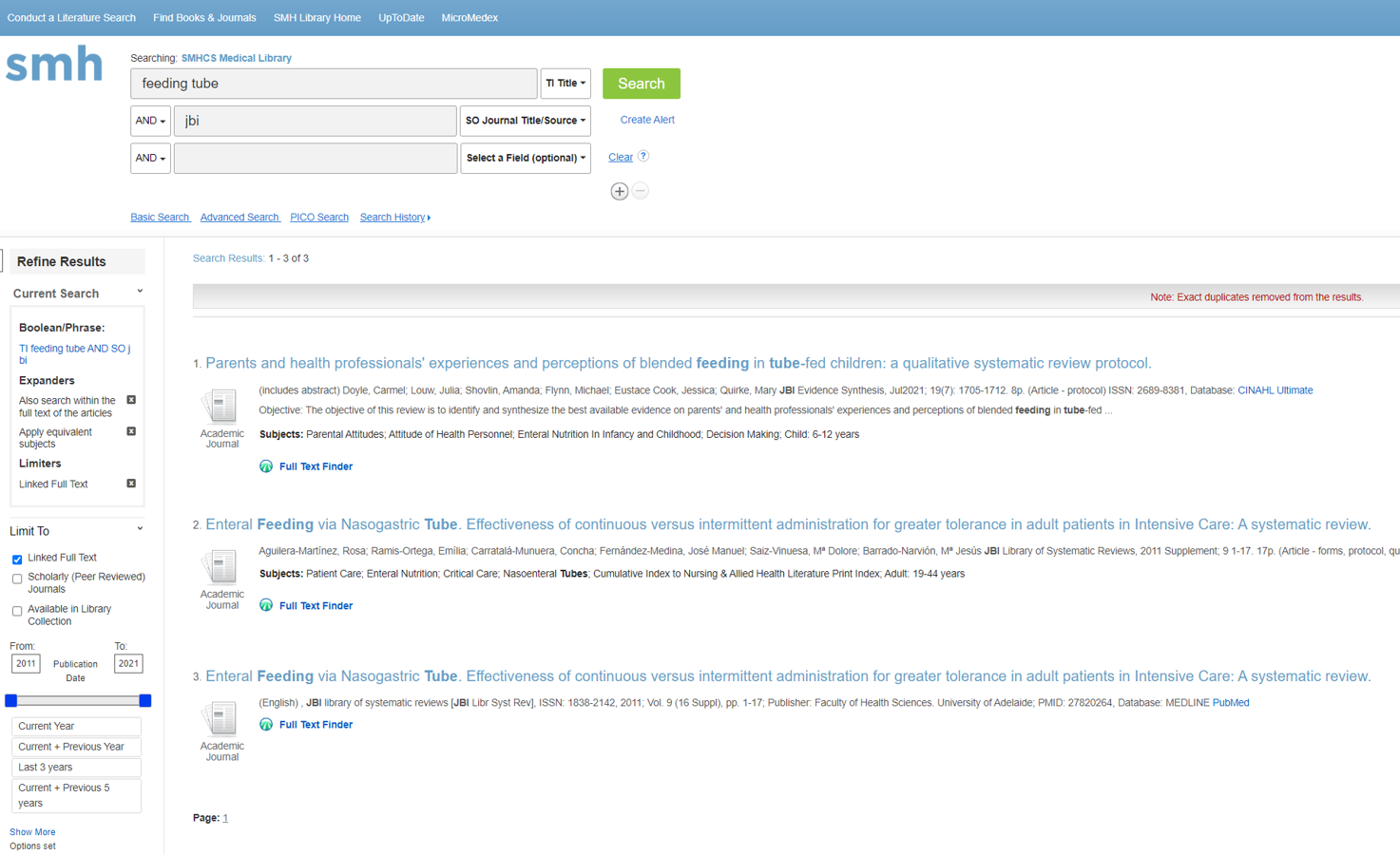
Literature Search Example 2 - Title and Source
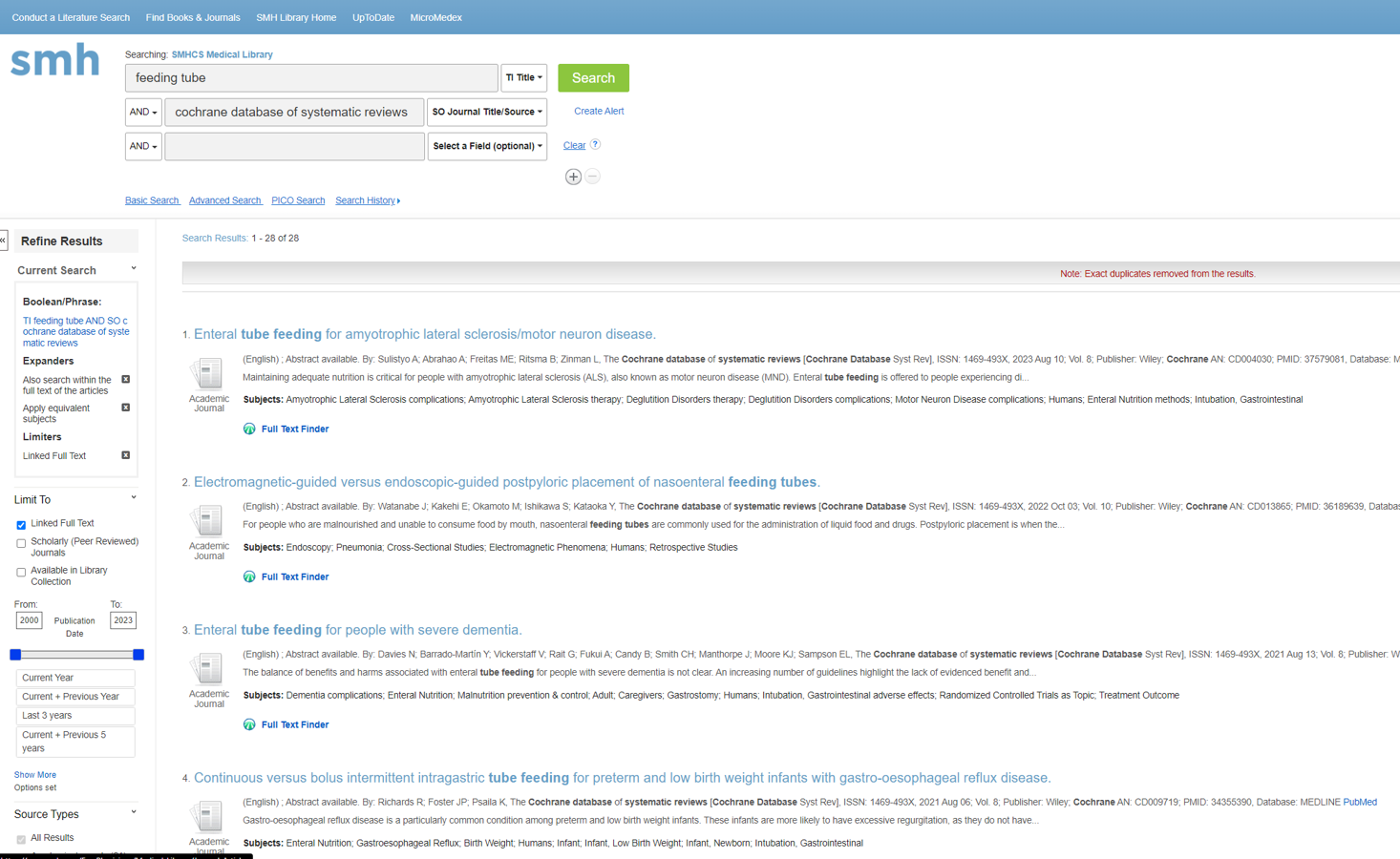
Literature Search Example 3 : Title and Text Word
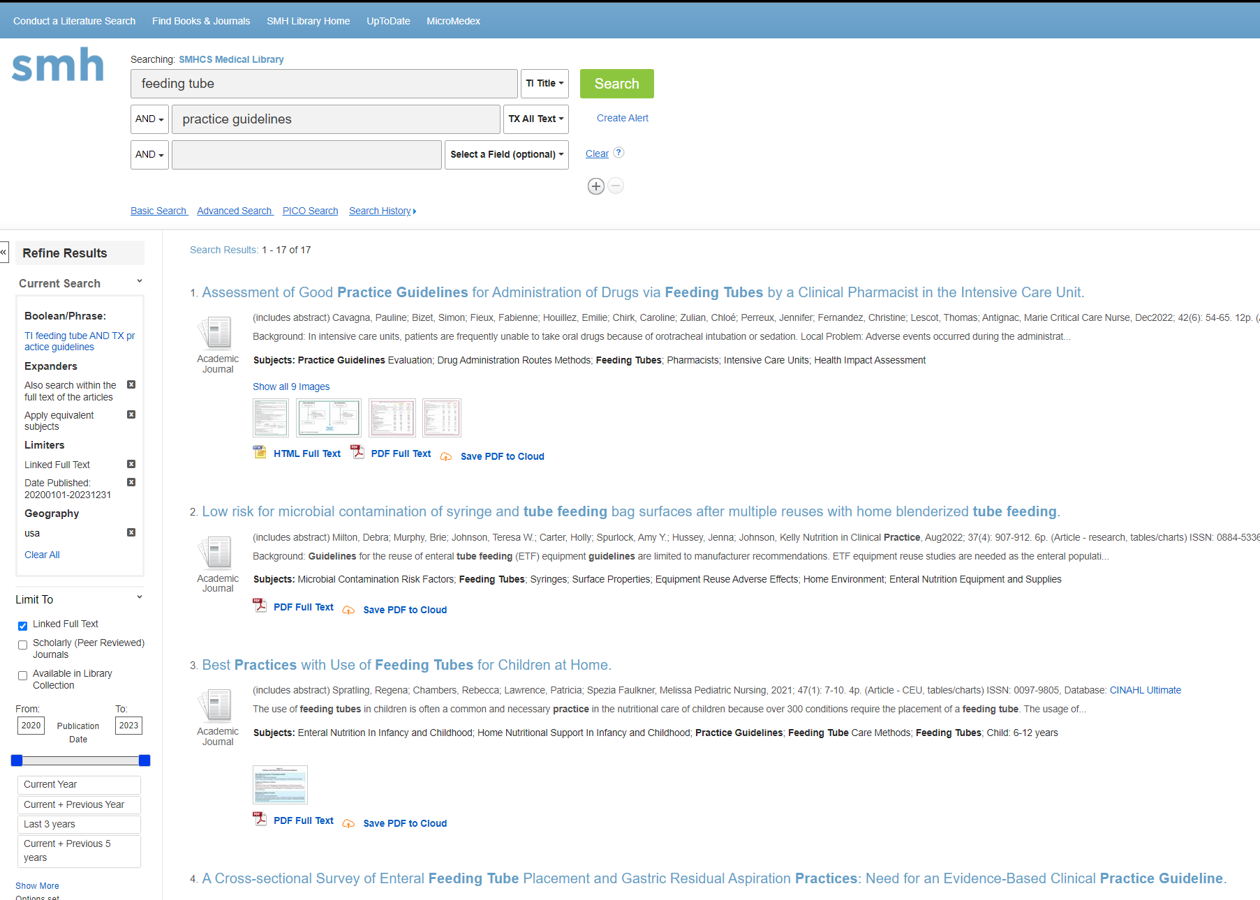

The following websites offer Clinical Practice Guidelines :
AOTA Practice Guidelines - Official guidelines from the American Occupational Therapy Association. Many are based in evidence and are assessed for ongoing validity.
APTA Clinical Practice Guidelines - Official clinical practice guidelines--both evidence-based and not--from the American Physical Therapy Association. .
ASHA Practice Policy - Practice Policy is part of the American Speech-Language-Hearing Association's recommended practice guidelines. Many of these are based in evidence, and can and should be assessed using EBP.
BMJ Clinical Practice Guidelines (UK) - Article from the British Medical Journal that describes the development, implementation, and appraisal of clinical practice guidelines. It also explores ways of increasing their use in nursing.
CDC Guidelines - The Prevention Guidelines Database is a comprehensive compendium of all of the official guidelines and recommendations published by the US Centers for Disease Control and Prevention (CDC) for the prevention of diseases, injuries, and disabilities. This compendium was developed to allow public health practitioners and others to quickly access the full set of CDC's guidelines from a single point, regardless of where they were originally published.
Clinical Practice Guidelines and Evidence-Based Reviews for Neuroscience Nurses -The guidelines and reviews put together by the American Association of Neuroscience Nurses (AANN) provide an overview of evidence based practices for nursing management of specific patient populations with neurological injuries. CPGs are available for free to the general public. Please click the "download" button to view the documents.
ECRI Institute's Guidelines Trust - Requires free account registration. ECRI Guidelines Trust is a publicly available online repository of objective, evidence-based clinical practice guideline content. Its purpose is to provide physicians, nurses, other clinical specialties, and members of the healthcare community with up-to-date clinical practices to advance safe and effective patient care.
Emergency Nurses Association (ENA) Clinical Practice Guidelines - ENA Clinical Practice Guidelines (CPGs) are evidence-based documents that facilitate the application of current evidence into everyday emergency nursing practice. CPGs contain recommendations based on a systematic review and critical analysis of the literature about a clinical question. CPGs are created following the rigorous process described in ENA’s Guidelines for the Development of Clinical Practice Guidelines. The purpose of CPGs is to positively impact patient care in emergency nursing by bridging the gap between practice and currently available evidence.
Infection Control Guidelines - These guidelines, developed by the Center for Disease Control (CDC), are fully accessible and can be downloaded via PDF.
National Center for Complementary and Integrative Health (NCCIH) Clinical Practice Guidelines - Issued by third-party organizations, and not the NCCIH, these guidelines define the role of specific diagnostic and treatment modalities in the diagnosis and management of patients. The statements contain recommendations that are based on evidence from a rigorous systematic review and synthesis of the published medical literature.These guidelines are not fixed protocols that must be followed, but are intended for health care professionals and providers to consider.
National comprehensive Cancer Network (NCCN) Guidelines - NCCN Clinical Practice Guidelines in Oncology (NCCN Guidelines®) are posted with the latest update date and version number.
Patient Safety Network (AHRQ) – PSNET collection comprises an extensive selection of evidence-based practice guidelines and resources relevant to the patient safety community.
Veterans Affairs Clinical Practice Guidelines - VHA, in collaborations with the Department of Defense (DoD) and other leading professional organizations, has been developing clinical practice guidelines since the early 1990s. In 2010 the Institute of Medicine identified VA/DoD as leaders in clinical practice guideline development.
*Please remember to search your respective Nursing Association's website for Guidelines.






